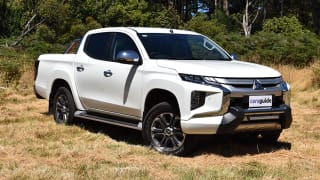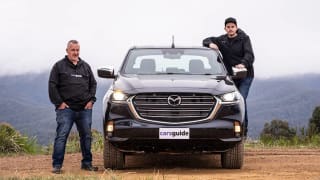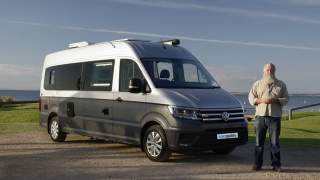Our test vehicle is the WorkMate single cab-chassis, which along with a dual cab ute variant represents the base model in the 4x2 line-up.
It comes standard with a 2.7-litre four-cylinder petrol engine and five-speed manual transmission (six-speed automatic optional) for a list price of $24,225. Our example is fitted with Toyota’s general purpose aluminium (GPA) tray and optional Silver Sky metallic paint, which results in a driveaway price of $30,522. No doubt fleet buyers and ABN holders can crunch sharper deals.
This 4x2 WorkMate is the cheapest entry point for HiLux ownership with a bare-boned specification tailored for hard yakka. There are no fancy alloys here, just 16-inch black-painted steel wheels with 215/65R16C tyres and a full-size spare. Inside you’ll find practical easy-clean vinyl flooring, basic fabric-trimmed driver and single passenger seats with minimal adjustment, no intermittent wipers and conspicuous blank inserts where buttons and switches are found in higher-grade models.

Even so, there are numerous features that you would perhaps not expect at this level like remote keyless entry, grab handles on the A pillars, height and reach adjustable steering wheel, adaptive cruise control and two-speaker infotainment system with 8.0-inch colour touchscreen (thankfully now with knob adjustments for volume/tuning), steering wheel-mounted controls and multiple connectivity including Apple CarPlay/Android Auto. Toyota also hasn’t scrimped on safety, with AEB, seven airbags and more.

















